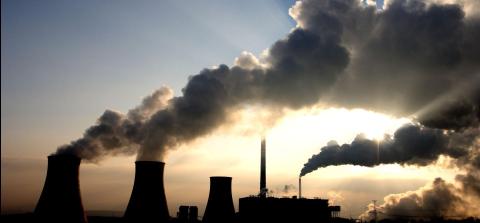Prospects improve for energy transition in the Philippines
Download Full Report
Key Findings
Despite a long history of controversy, the Philippines power sector is only now waking up to the stranded asset crisis that has been rumbling global markets.
Despite global trends, governments are being pressured to continue supporting fossil fuels through market structures that lack transparency.
There have been some suggestions that Chinese-backed projects have tried to negotiate guaranteed capacity fee payments that would pass the risk of their decisions about uneconomic capacity onto Philippine consumers. This would be in contrast to prevailing market trends.
Executive Summary
Globally, we see that the power sector is undergoing a complex and long-term transformation due to accelerated technological change and shifting consumer preferences for clean energy. The result has been more cost-effective renewable power solutions that are now delivering lower electricity prices. Unprecedented change in technology options creates a unique opportunity to future-proof fast-growth power markets. The new economics of clean power solutions mean that investors in generating assets should be required to stresstest their investment decisions to address a new market scenario where renewable energy claims a rising share of demand growth. With falling costs of storage and more affordable technology, this can happen more rapidly.
February 2013 marked the beginning of a new era in the Philippines with unsubsidized wind farms producing energy at a lower price than new coal and new gas-fired power plants. Since 2013, we have seen systematic deflationary trends for renewable energy with record-low pricing for wind and solar compared to fossil fuel and nuclear power. New technology options, such as battery storage combined with wind and solar, can now provide dispatchable power flexibly, potentially cutting costs and improving national energy security. Today, there is an unprecedented opportunity to redesign the market to attract lower prices and more investment. The key is to move away from legacy market management decisions that have resulted in excessive reliance on imported coal and diesel units with open-ended imported fuel obligations. Not only are these options increasingly uncompetitive, they carry ongoing foreign currency (FX) and commodity price risks—all of which result in a heightened overall stranded asset risk.
“Today there is opportunity to redesign the energy market to attract lower prices and more investment.”
Government planners, regulators, investors and developers are at a crossroads, facing choices about whether to double down on coal-fired electricity or instead choose a more prudent course rooted in renewables and gas. There are three key trends to consider in order to understand the current outlook and how prospects have improved for the energy transition in the Philippine power sector:
1—Fuel price pass-throughs have inflated prices and are a key driver of the transition: The Philippines have electricity prices amongst the highest in South East Asia and is considered relatively high compared to global standards, at roughly USD0.20 per kilowatt-hour (kWh) or Philippine Peso (PHP) 10 per kWh. This is due to reliance on imported fossil fuels, high financing costs, and uncompetitive market structures which have stifled innovation.
For example, a 167.4MW coal plant was expected to deliver PHP3.96 (USD0.08) per kWh based on a 2016 Power Supply Agreement (PSA) price. However, on average, the coal plant delivered PHP2 per kWh above the agreed price, sometimes reaching PHP7.11 per kWh. This variance in price is currently permitted under market rules under the “pass-through provision” which allows fluctuations in fuel price and FX rates to be passed onto consumers and industry. As a result, from May 2018 to May 2019, the unpredictability of coal prices led to consumers paying over PHP788.7 million (equivalent to USD15 million) compared to what was originally estimated.
If renewables enter the market, they have the potential to cut wholesale power prices by 30% and could dramatically change the structure of the market. For example, the feed-in-tariff (FiT) and prioritized dispatch have led to reductions in wholesale electricity spot prices by PHP1.47 per kilowatt-hour (kWh) for consumers, which led to savings or avoided costs of PHP44.3 billion from November 2014 to October 2015.
2—Real competition may be coming soon: New catalysts for change are coming, not from the marketplace, but from legal challenges which have validated the government’s intention to spur competition through transparent bidding to reduce electricity prices for consumers and industry. More retail competition is in the cards and the role of grid operators can also be forced to change as they may be barred from passing on fuel price and FX risk.
This is as a result of a challenge by consumer groups in 2017 to the Energy Regulatory Commission (ERC) focused on the transparency and competitiveness of the process used to sign PSAs from 30 July 2015 onward. On 6 May 2019, the Supreme Court of the Philippines ruled in favor of the consumer groups, effectively voiding all PSAs that were submitted after 7 November 2015, including the 3.5GW Meralco coal pipeline, mainly backed by large corporate players including Meralco-owned subsidiaries and affiliates.
3—Watch Meralco: The best way to monitor current trends is to track how Meralco — the owner of the country’s largest distribution franchise in Metro Manila and also an independent power producer (IPP) investor — adapts to market pressures. Meralco could emerge as a big winner or a damaged laggard.
“Meralco could emerge as a big winner or a damaged laggard.”
These three major trend-setters have the potential to reshape the economics of power in the Philippines. The timing is highly sensitive because of the financial risk associated with the 3.5GW pipeline of new coal-fired capacity. Not only could changing economics impose losses on investors, they could blight the main Luzon grid with stranded assets that would pre-empt market innovation and burden the economy for decades to come. Making smarter policy decisions about the true cost of long-lived power asset investments like Meralco’s 3.5GW coal pipeline could be crucial to the competitive potential of the Philippines economy. One important reform would be to analyze the risk profile of take-or-pay imported fuel agreements. They represent fixed long-term obligations that should be balanced against the Philippines’ unique potential to benefit from newer technologies that are just coming to market. In a sign that insiders see the risk, Meralco has already changed its procurement style to better manage the company’s risk profile.
According to the Department of Energy, there are outstanding commitments of 4.8GW in coal projects slated for target commercial operation by 2019. This leads to a potential for up to USD9.5 billion in stranded asset risk, with a broader risk beyond 2019 of 10,423MW (equivalent to USD20.9 billion). Given the real risk that these bets could go wrong, it is critical to ask policymakers who they think will pay for such losses? As things stand now, it appears that the cost of these questionable commercial decisions will be borne by households, industry, or investors, including local Philippine banks. This may place an added burden on Philippine households and industry consumers who already pay subsidies for diesel plants via the Universal Charge for Missionary Electrification (UCME) at a cost of over USD250 million per annum. Households and industry are expected to pay a subsidy of USD293.2 million for import-diesel plants in 2019. This liability is also expected to grow if the country maintains its import fossil fuel strategy instead of pursuing more affordable renewable energy and storage options.
Press release: IEEFA: For price-sensitive LNG buyers in Asia, now is not the time to build new LNG import terminals
Please view full report PDF for references and sources.
















